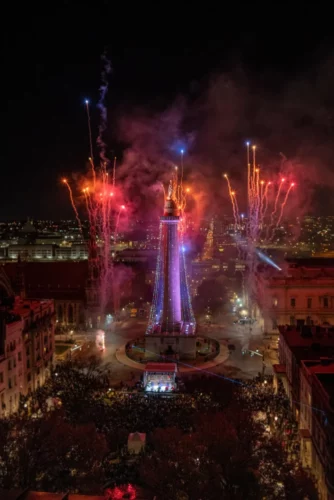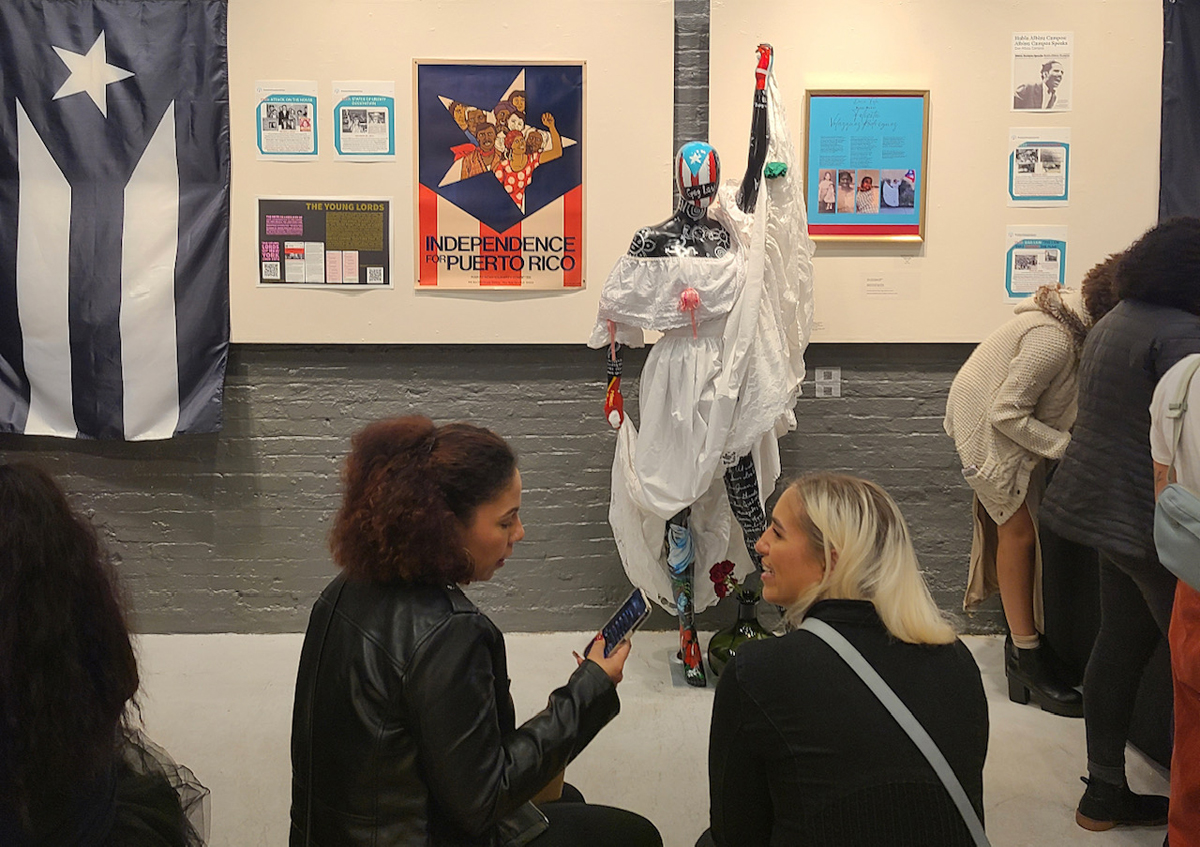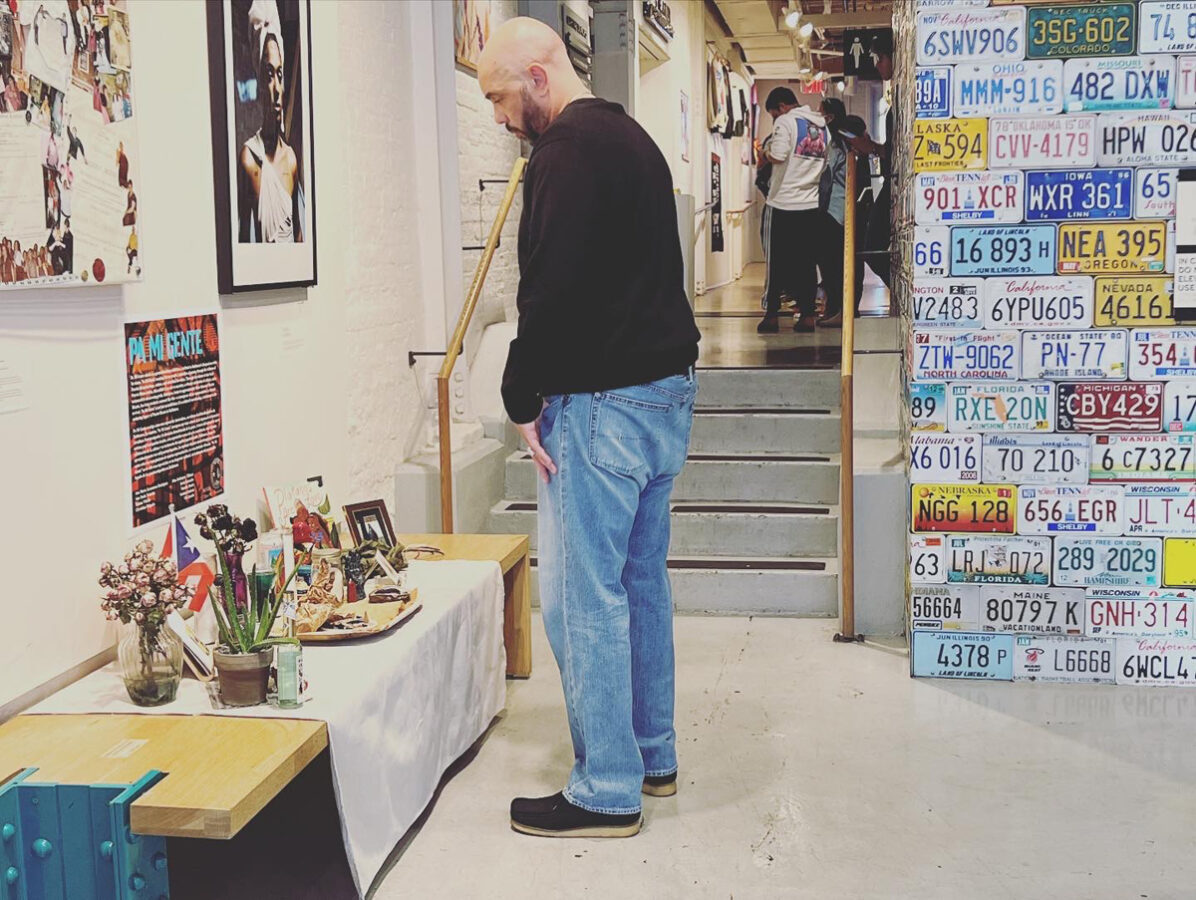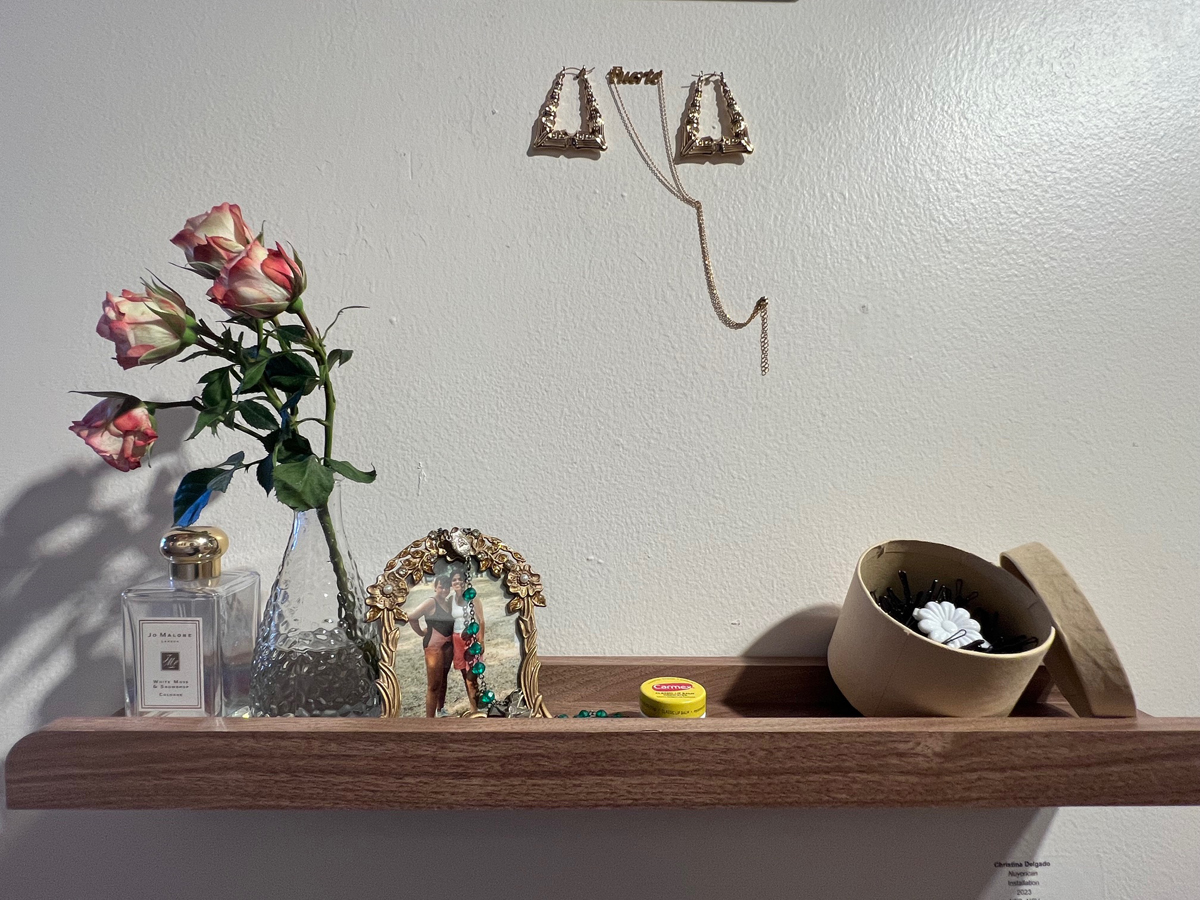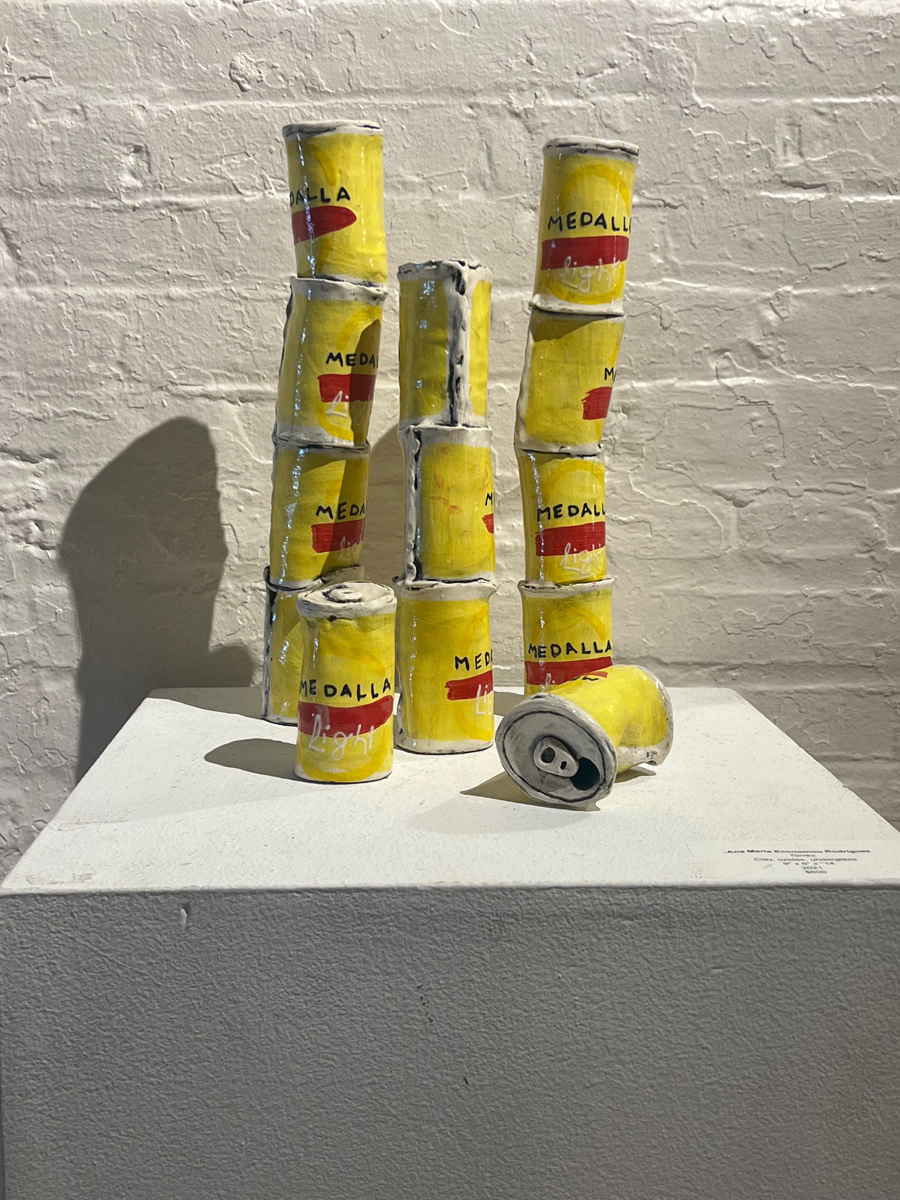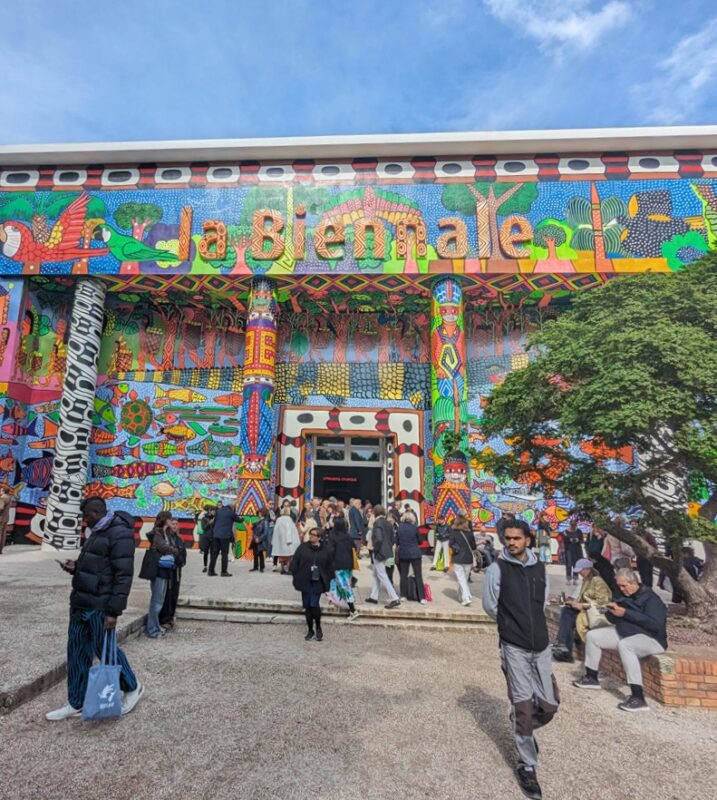Curator Christina Delgado’s Pa’ Mi Gente, on view through December 5th at Motor House, is an immersive cultural showcase of Baltimore-based Puerto Rican artists. The exhibition is as engaging as it is educational, providing an experience that truly encapsulates the richness of the Island of Enchantment’s culture and what it means to be Boricua.
Front and center in the exhibition stands an information station dedicated to the Cemi, a fundamental symbol in indigenous Taíno culture. Cemis are sculptural objects, usually made of stone and other materials, believed to house nature and ancestral spirits pertinent to Taíno mythology.
One of the spirits discussed—and also one of the most notable ones—is Atabey, the feminine principle of the world and primordial mother of all Taíno deities. The designated Cemi area is equipped with educational information on this ancestral spiritual practice, as well as an interactive activity. Stamps carved with different Cemi symbols and dye ink are available for visitors to participate in the creation of their own personal Cemis.

